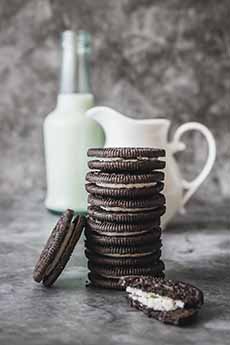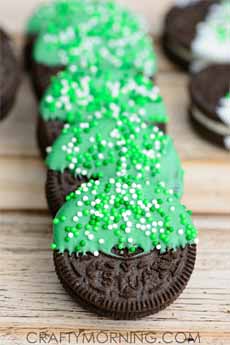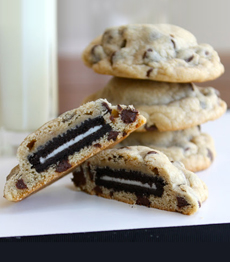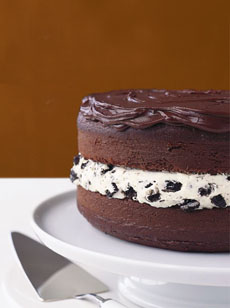The History Of Oreos For National Oreo Day
|
March 6th is National Oreo Day, honoring the world’s most popular cookie. It’s a simple sandwich cookie, yet it’s the passion of many cookie eaters. (Also check out the year’s 44 cookie holidays.) We almost feel like ditching work to celebrate—with Oreo cheesecake, cookies and cream ice cream and an Oreo milkshake. Overkill? Some say yes, some say no. The history of Oreos follows these links to delicious (and fun!) Oreos: According to Time magazine, the National Biscuit Company (later shortened to Nabisco) sold its first Oreo sandwich cookies to a Hoboken grocer on On March 6, 1912. They weren’t an original concept: Sunshine’s Hydrox cookies* (among others) preceded them in 1908. There were two original Oreo flavors: original (chocolate) and lemon meringue. The original was far more popular, and Nabisco discontinued lemon meringue in the 1920s. Today Oreo is the world’s most popular cookie, sold in more than 100 countries†. According to a press release from the brand in January 2025, more than 60 billion Oreo cookies are sold each year with more than 20 billion of sold in the U.S. An estimated 500 billion Oreos have been sold since 1912. Yes, there were other chocolate sandwich cookies. But what made Oreos stand out was the thick, creamy filling invented by Sam J. Porcello, the principal food scientist at Nabisco. (He also created the “stuf” in Double Stuf Oreos and the chocolate-covered and white chocolate-covered Oreos. Now that’s bragging rights for generations of kids, grandkids and great-grands to come.) Nabisco says that an unnamed “design engineer” created the current Oreo design, which was updated in 1952‡. Other sources name him as William A. Turnier, who worked in the engineering department creating the dies that stamped designs onto cookies. Here’s the story of the design and its meaning. No one knows for certain the origin of the name “Oreo.” Some believe it was derived from the French word for gold, “or,” because the original packaging was mostly gold. The bigger curiosity to us is from The Wizard Of Oz film. Why did the Winkie Guards at the castle of the Wicked Witch Of The West sing a chorus of “Oreo?” They were chanting something like “Oleo-oh, yo-ho.” It was supposed to be a parody of the Song of the Volga Boatmen. In fact, the costumes of the Winkie guards were similar to those of Czarist Russian guards [source]. *The Oreo became kosher in 1998, when the lard in the original recipe was replaced with vegetable shortening. Prior to then, Sunshine Bakeries’ Hydrox cookies had long been the kosher alternative. But most people preferred the taste of Oreos, and Hydrox cookies were discontinued by Keebler in 2003. †In terms of sales, the top five Oreo-nibbling countries are the U.S., China, Venezuela, Canada and Indonesia. In some countries, like China, Nabisco’s parent company, Kraft, reformulated the recipe to appeal to local tastes, including green tea Oreos. ‡The current design replaced a design of a ring of laurels, two turtledoves and a thicker, more mechanical “Oreo” font. |
|
|
|
CHECK OUT WHAT’S HAPPENING ON OUR HOME PAGE, THENIBBLE.COM.
|
||






